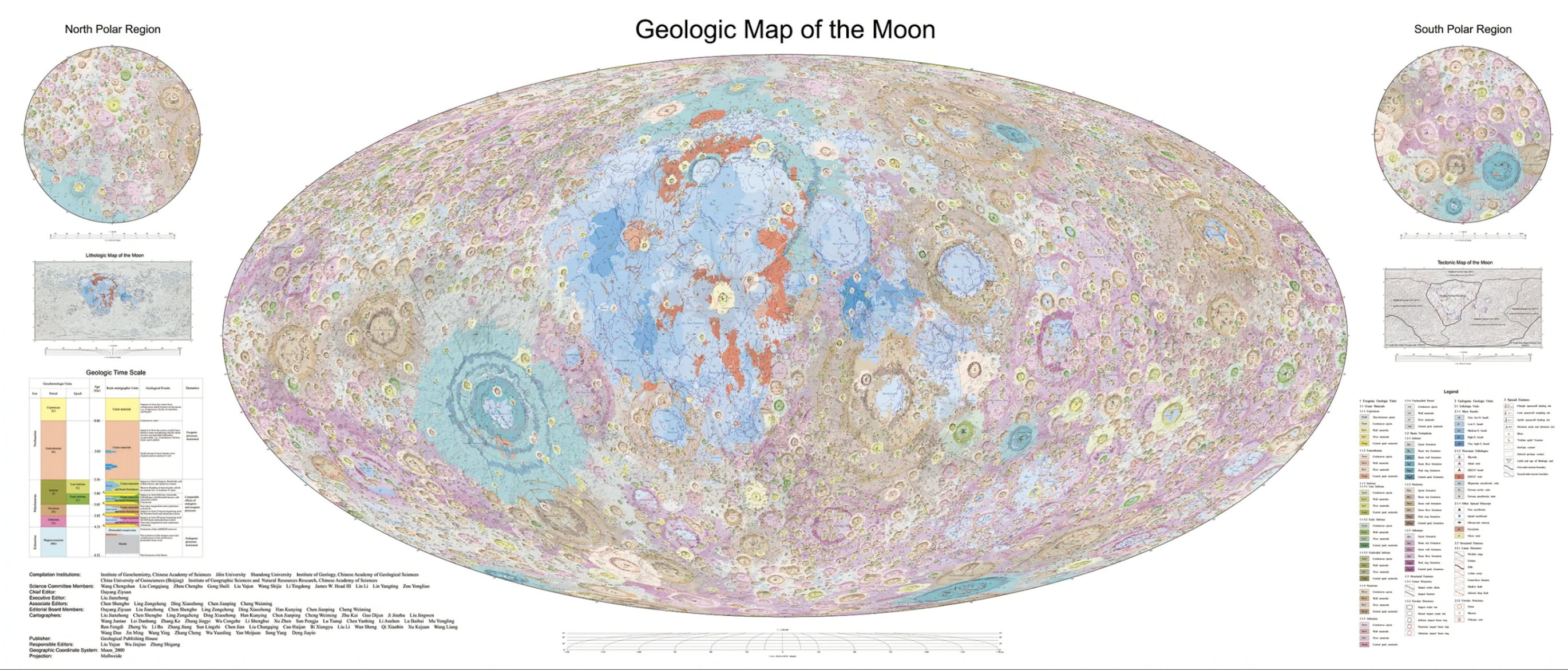World First, Uncovering the Moon's Hidden Depths

For centuries, the moon has captured the imagination of humanity, inspired tales, and fueled curiosity about its mysteries. Today, a significant milestone has been reached as the world witnesses the official release of the first-ever high-precision lunar geological atlas by a consortium of Chinese institutions. This remarkable achievement marks a turning point in lunar exploration, paving the way for scientific research and future lunar expeditions.
Since the Apollo program’s inception in the 1960s, both international and Chinese efforts have propelled lunar exploration and scientific study to unprecedented heights. However, the field of lunar geology has long relied on outdated maps developed during the Apollo era. With advancements in research and growing exploration ambitions, these maps have become inadequate, unable to meet the evolving scientific demands and the quest for deeper lunar understanding.
In a monumental endeavor supported by various prestigious institutions, including the Chinese Academy of Sciences’ Institute of Geochemistry has revolutionized lunar cartography. Collaborating with scientists and mapmakers from renowned institutions such as Jilin University, Shandong University, China University of Geosciences (Beijing), the Institute of Geology of the Chinese Academy of Geological Sciences, and the Institute of Geographic Sciences and Natural Resources Research of the Chinese Academy of Sciences, they embarked on the development of the 1:2.5 million digital lunar geological maps.
Intricately woven with comprehensive knowledge of the moon’s origin and evolution, this landmark project relied on data from China’s Chang’e lunar exploration missions. The team also drew upon existing global exploration data and research achievements, meticulously studying and compiling essential elements such as lunar rock formations, geological structures, and geological eras. Through these efforts, they established a standardized, independent lunar geological mapping technology and produced the 1:2.5 million lunar digital geological-structural series. This invaluable achievement is a testament to China’s commitment to lunar research and its contribution to the understanding of lunar origin, evolution, and the broader scope of the solar system’s evolution.


Distinguishing itself from the lunar geological maps of the Apollo era, this series of maps is rooted in the dynamic nature of the moon’s evolution. It introduces a visionary “Three Ages and Six Epochs” lunar geological chronology division scheme, enabling a more objective portrayal of the moon’s geological history. Moreover, it outlines a classification system for lunar structures and rock types based on internal and external geological evolution, providing unprecedented clarity on the moon’s structural and geological evolution. The team’s work also includes the establishment of a classification system for lunar impact basins and subtypes, unveiling an evolution sequence for these basins and presenting innovative identification markers for basin construction. This framework blends internal and external geological processes, revolutionizing our understanding of the lunar and terrestrial planet evolution.
The official release of this extraordinary lunar geological atlas is a momentous occasion. The atlas, available in both Chinese and English, features the “1:2.5 million Lunar Comprehensive Geological Map,” meticulously crafted with 150 distinct colors derived from four primary hues—cyan, black, yellow, and magenta. Remarkably, it identifies and labels a staggering 12,341 lunar craters, 81 lunar impact basins, 17 rock types, and 14 structural categories. Additionally, the atlas showcases crucial elements such as landing sites and special elevation points, enhancing our understanding of the moon’s diverse topography.
Accompanying the atlas is an in-depth instruction manual unveiling the intricate details behind the compilation process. It provides comprehensive insights into the data utilized, principles governing map scale selection, content expression, the “Three Ages and Six Epochs” lunar geological chronology division scheme, classification systems for lunar structures and rock types, and the captivating geological evolution history of the moon.
The significance of this extraordinary achievement extends far beyond its release. The lunar geological atlas has already been seamlessly integrated into a digital lunar cloud platform developed by Chinese scientists, enabling lunar researchers worldwide to access this invaluable resource. Furthermore, it will play an indispensable role in lunar scientific research, popular science education, and the strategic planning of future lunar exploration missions. From the selection of landing sites to lunar resource exploration and pathway planning, this atlas is destined to shape humanity’s future exploration and understanding of Earth’s closest celestial companion.
As we embark on this new chapter of lunar exploration, the release of the high-precision lunar geological atlas stands as a testament to humanity’s unwavering curiosity and relentless pursuit of knowledge. The moon, a source of inspiration for countless generations, continues to reveal its enigmatic secrets, and with this unprecedented atlas, we are equipped to unravel its captivating mysteries like never before.





